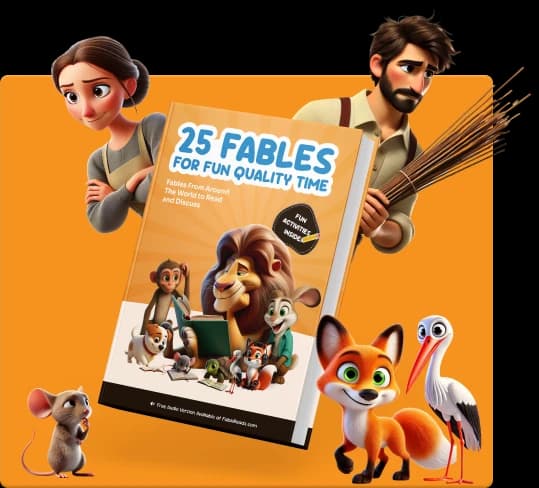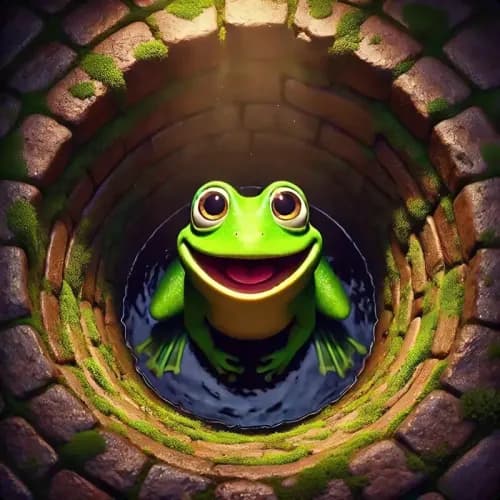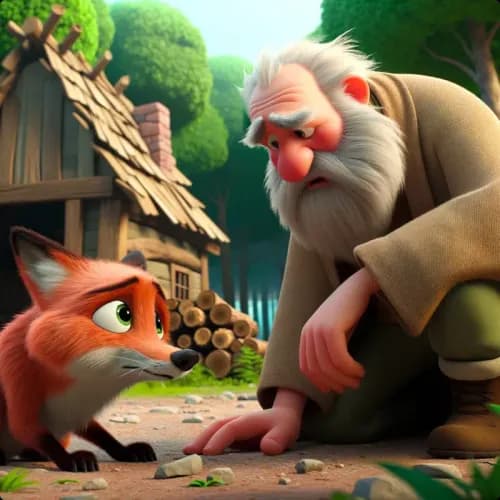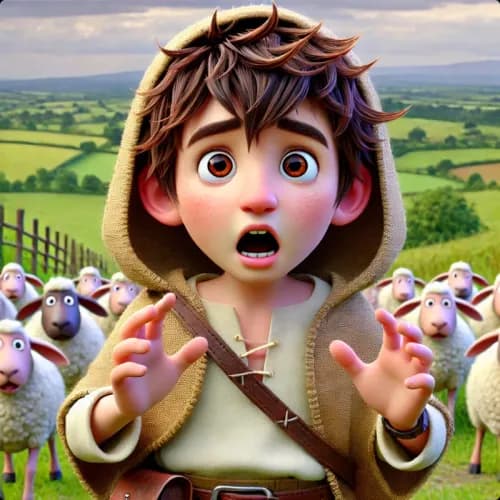Aesop | Greece
Ang Uwak at Ang Pitsel
Isang uhaw na uwak ang matalinong naghulog ng mga bato sa pitsel, na nagdulot ng pagtaas ng tubig upang makainom at mapawi ang uhaw.
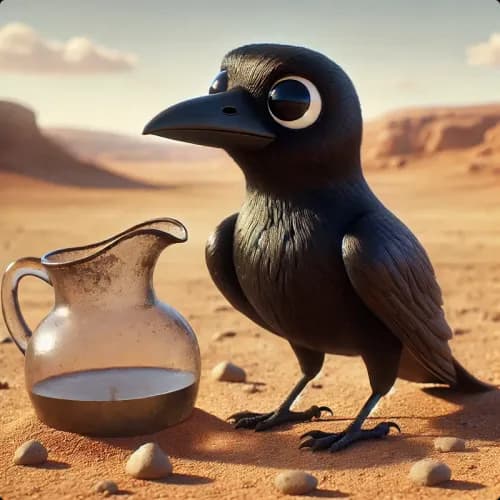
Sa isang tuyo at mainit na lugar, may isang uwak na labis na nauuhaw. Lumipad ito sa paligid, naghahanap ng kahit anong mapagkukunan ng tubig. Sa wakas, nakita nito ang isang pitsel na may kaunting tubig sa ilalim.
Nais ng uwak na uminom, kaya sinubukan nitong ilubog ang tuka sa loob ng pitsel. Ngunit masyadong malalim at makitid ang pitsel, kaya hindi maabot ng uwak ang tubig. Paulit-ulit itong sumubok, ngunit hindi talaga ito makakuha ng tubig.
Naisip ng uwak na baka puwede nitong itagilid ang pitsel para makuha ang tubig, ngunit nakabaon ito sa buhangin kaya imposible itong galawin.
Habang patuloy na nag-iisip, napansin ng uwak ang ilang maliliit na bato malapit sa pitsel. Nagkaroon ito ng ideya. Pinulot ng uwak isa-isa ang mga bato gamit ang tuka at inihulog ang mga ito sa loob ng pitsel.
Bawat batong inihulog ng uwak ay nagpataas ng tubig sa loob ng pitsel. Patuloy na naglalagay ng mga bato ang uwak, at unti-unting tumaas ang tubig hanggang sa abot na ito ng uwak upang inumin.
Sa wakas, nakainom ng tubig ang uwak. Labis itong natuwa at ipinagmamalaki ang kanyang katalinuhan.
Bumili ng Aklat at Tumulong na Ihatid ang mga Pabula sa Mundo
I-enjoy ang 25 piling pabula habambuhay, naka-print. Bawat pagbili ay sumusuporta sa mga libreng kwento para sa mga bata, magulang, at guro sa buong mundo sa fablereads.com
